Are you interested in the capabilities.php file in WordPress? Maybe you’ve heard this time period talked about in growth circles or encountered it whereas customizing your web site. This highly effective file performs a vital position in extending WordPress performance, however it requires cautious dealing with.
On this information, you’ll uncover what the capabilities.php file is, the place to search out it, the best way to edit it safely, and sensible methods to make use of it for customizing your WordPress web site. Whether or not you’re working with traditional or trendy block themes, understanding this file will assist you take your web site to the following stage.
Desk of Contents
- What is the WordPress functions.php File?
- Where to Find the functions.php File
- How to Safely Work with functions.php
- How to Access and Edit functions.php
- Functions.php in Block Themes vs. Classic Themes
- When to Edit functions.php vs. Other Alternatives
- Best Practices for Organizing Your functions.php File
- Security Considerations for functions.php
- Useful Code Snippets for functions.php
What’s the WordPress capabilities.php File?
The capabilities.php file serves as a mini-plugin to your WordPress theme. In contrast to common plugins that work throughout all themes, this file is theme-specific and prompts robotically when your theme masses. Consider it as your theme’s private assistant, prepared to increase WordPress with {custom} options.
WordPress makes use of PHP as its core programming language, and the capabilities.php file helps you to add {custom} PHP code on to your theme. This functionality means that you can modify present WordPress behaviors or add new performance with out putting in further plugins.
Each WordPress theme contains its personal capabilities.php file, which accommodates code defining its distinctive options. These may embody:
- Customized menu areas
- Widget areas
- Theme-specific shortcodes
- Customized put up varieties
- Particular styling choices
The capabilities.php file differs from plugins in a key means: it’s tied particularly to your energetic theme. Whenever you swap themes, any performance added by means of the capabilities.php file disappears until you manually switch that code to your new theme.
For builders, this file stays an important device for creating theme-specific options. It permits the creation of distinctive experiences whereas retaining the theme’s code organized and maintainable. {Many professional} WordPress themes leverage capabilities.php extensively to ship their distinctive capabilities.
Basic Themes vs. Block Themes
It’s essential to notice that the position of capabilities.php varies between traditional and block themes:
- Basic themes: The capabilities.php file is central to theme performance, dealing with every part from registering sidebars to including theme assist options.
- Block themes: Whereas nonetheless current, its position is considerably lowered as many customizations can now be dealt with by means of theme.json configuration. Block themes use capabilities.php primarily for backend performance that can’t be managed by means of the block editor interface.
The place to Discover the capabilities.php File
WordPress organizes its information in a selected construction, and realizing this construction helps you find the capabilities.php file. Totally different variations of this file exist in varied areas, every serving a special objective.
The principle capabilities.php file to your energetic theme resides in your theme’s listing. To seek out it, navigate to:
wp-content/themes/your-theme-name/capabilities.php
This path applies to each traditional and block themes – the situation of capabilities.php hasn’t modified within the transition to dam themes.
In case you’re utilizing a baby theme (which we strongly suggest for customizations), you’ll discover one other capabilities.php file at:
wp-content/themes/your-child-theme-name/capabilities.php
WordPress core additionally accommodates a capabilities.php file positioned within the wp-includes listing. Nevertheless, you must by no means modify this core file, because it accommodates important WordPress performance that updates with every new WordPress launch.
When WordPress masses a web page, it processes the capabilities.php information in a selected order:
- The WordPress core capabilities.php file masses first
- If utilizing a baby theme, the kid theme’s capabilities.php masses subsequent
- The guardian theme’s capabilities.php masses final
This loading sequence creates a cascading impact the place baby theme capabilities can override guardian theme capabilities, permitting for personalisation with out altering the unique theme information.
The way to Safely Work with capabilities.php
Enhancing the capabilities.php file carries potential dangers. A single syntax error can break your complete web site, ensuing within the dreaded “White Display of Demise” or loss of admin access. Following these security practices will assist you keep away from disasters.
Check on a Staging Surroundings
Earlier than making any adjustments to your dwell web site, create a staging environment that mirrors your manufacturing web site. This strategy helps you to take a look at modifications with out affecting guests. Many internet hosting suppliers supply one-click staging creation, making this course of easy.
A staging web site means that you can experiment freely, realizing that errors received’t affect your dwell web site. You may excellent your code earlier than making use of adjustments to your manufacturing setting.
Again Up Your Web site
At all times create a backup earlier than modifying capabilities.php. A whole backup contains your WordPress information and database, offering a security web if one thing goes fallacious.
Retailer your backups in a safe location separate out of your internet hosting account. This observe ensures you may restore your web site even when you lose entry to your internet hosting dashboard.
Use a Little one Theme
Child themes present the most secure technique for customizing capabilities.php. When a guardian theme updates, it overwrites its capabilities.php file, erasing any {custom} code you’ve added. A toddler theme preserves your customizations by means of theme updates.
This recommendation applies to each traditional and block themes. Regardless that block themes shift some customizations to theme.json, a baby theme continues to be the really useful strategy for {custom} PHP performance.
Your baby theme’s capabilities.php doesn’t have to duplicate all guardian theme code. It solely must include your {custom} additions or modifications.
Undecided the best way to arrange a baby theme? Try our detailed information on how to create a WordPress child theme.
Restoration Plan for Errors
Regardless of precautions, errors can nonetheless happen. Put together a restoration plan:
- Preserve FTP/SFTP credentials available
- Know the best way to entry your web site information if the admin space turns into inaccessible
- Perceive the best way to restore from backups shortly
- Have a primary understanding of frequent PHP errors and their options
Preparation minimizes downtime if issues come up.
The way to Entry and Edit capabilities.php
A number of strategies can be found to entry the capabilities.php file, every with benefits and limitations.
WordPress Theme Editor Technique
Probably the most simple strategy makes use of the built-in WordPress Theme Editor, however we solely suggest this strategy for traditional themes.
1. Log in to your WordPress dashboard.
2. Navigate to Look > Theme File Editor.
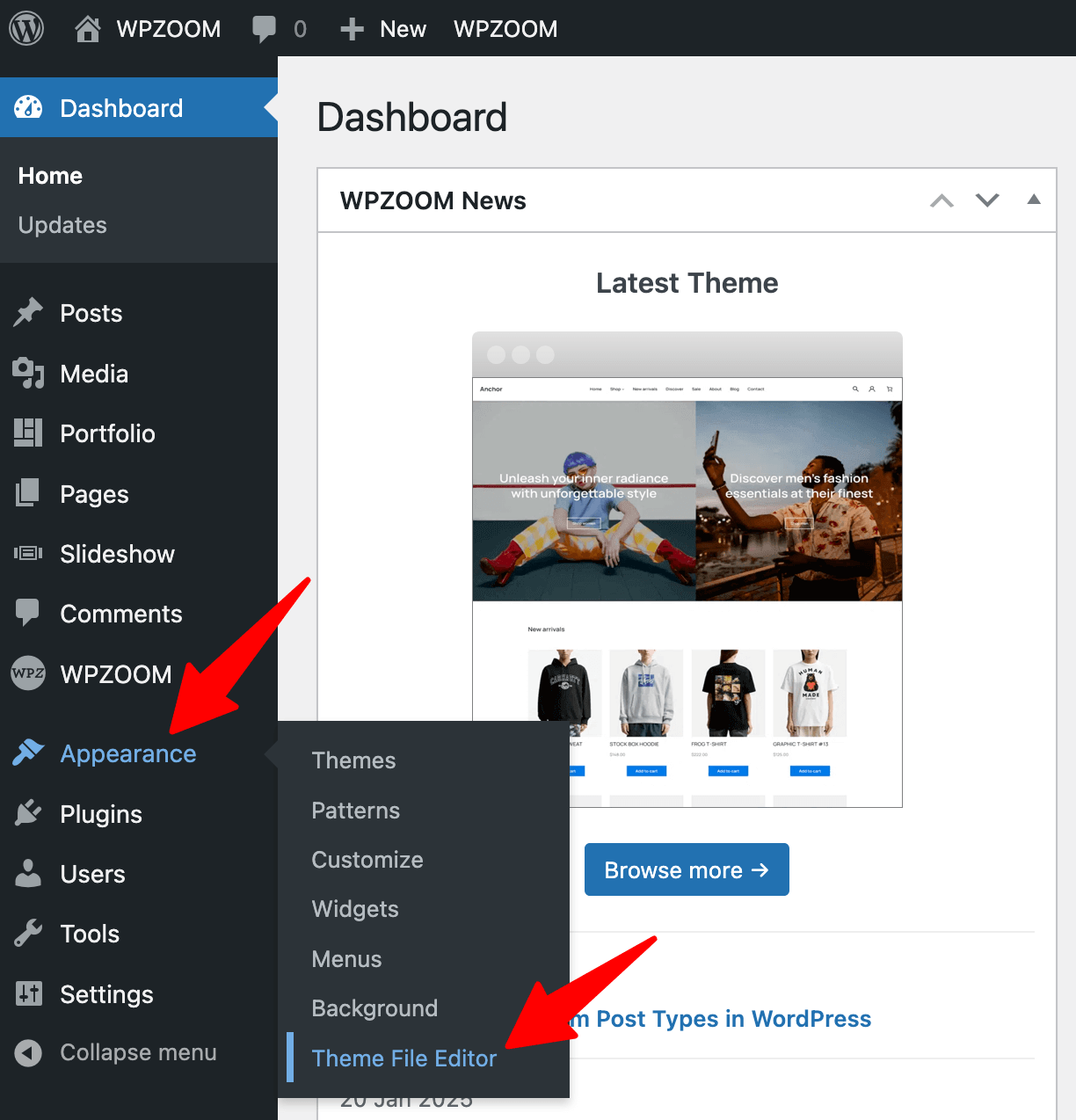
3. Choose your theme from the dropdown (if essential).
4. Search for “Theme Features (capabilities.php)” within the checklist of theme information on the correct.
5. Edit the file immediately within the browser.
6. Click on “Replace File” to save lots of adjustments.
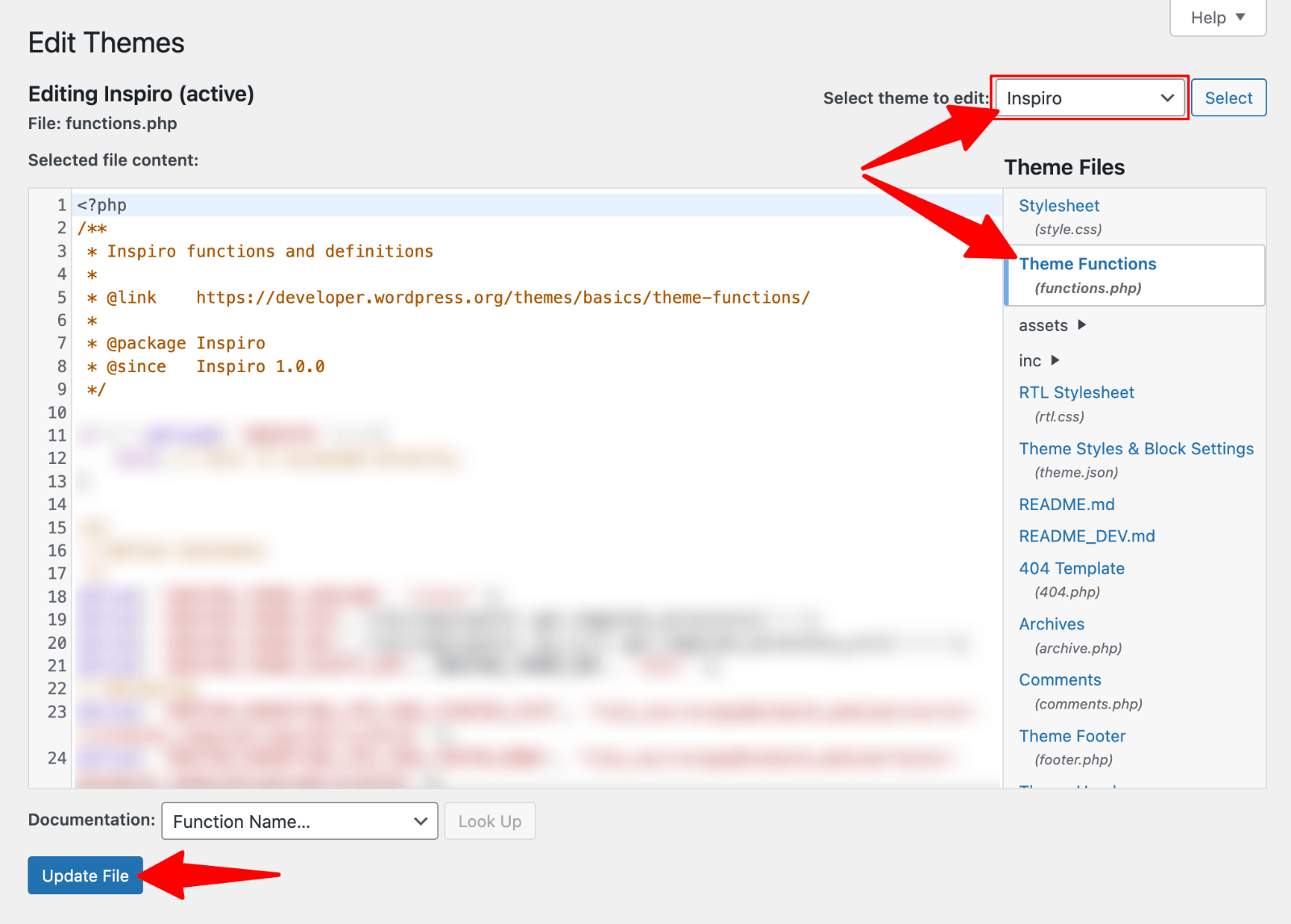
When you’ve opened the file, edit it immediately within the browser and click on “Replace File” to save lots of adjustments.
Execs:
✅ No further software program required
✅ Instantly accessible out of your dashboard
✅ Consists of primary syntax highlighting
Cons:
❌ Restricted error checking
❌ No model management
❌ In case your code breaks the location, you may lose dashboard entry
❌ Typically disabled on managed internet hosting for safety causes
❌ Not well-optimized for block themes
WPIDE Plugin Technique
The WPIDE plugin supplies a robust code editor immediately inside your WordPress dashboard:
1. Set up and activate the WPIDE plugin from the WordPress repository.
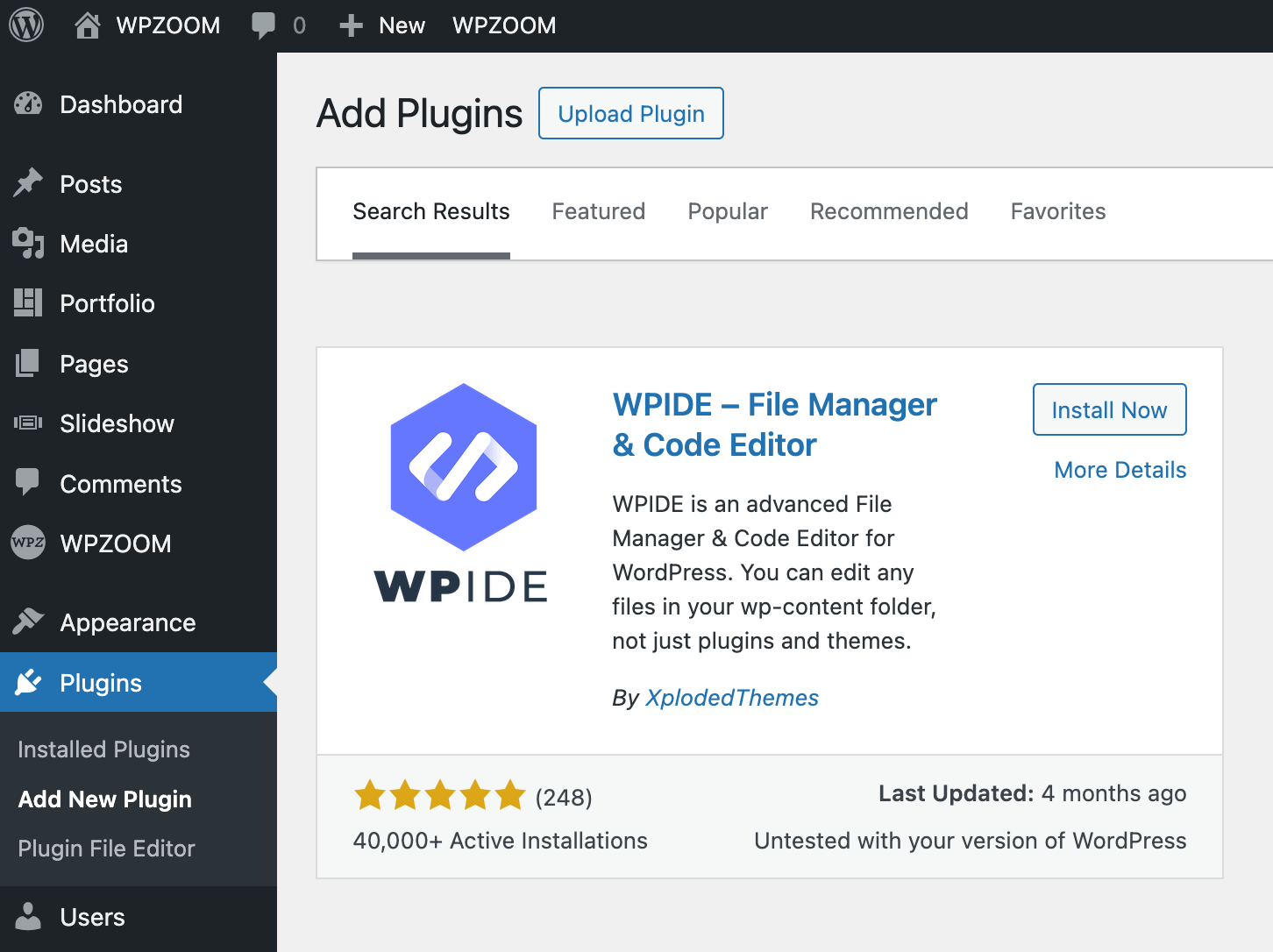
2. Go to WPIDE in your WordPress admin menu.
3. Navigate to wp-content/themes/your-theme-name/ within the file browser.
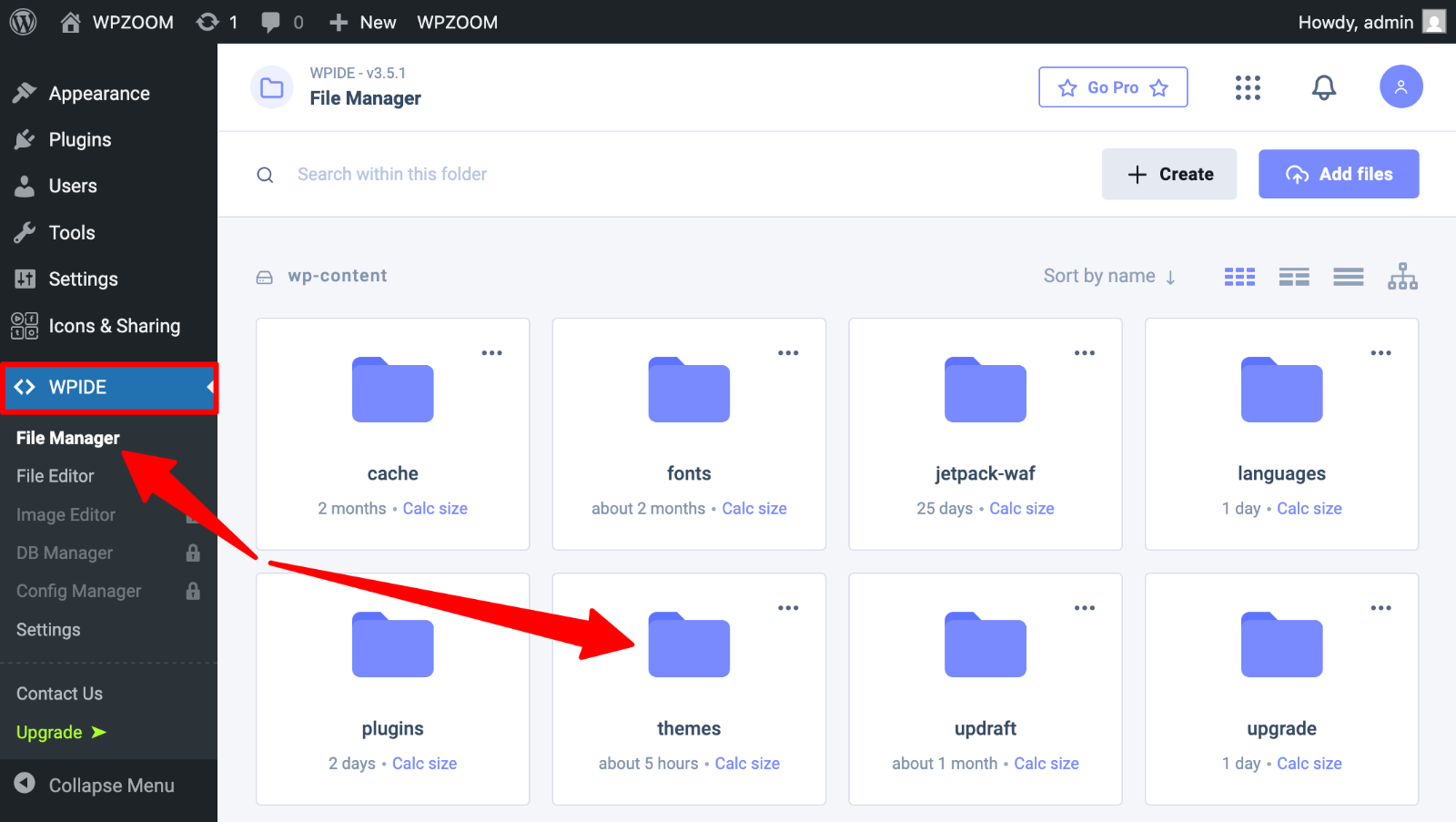
4. Discover the capabilities.php file and click on it to begin modifying.
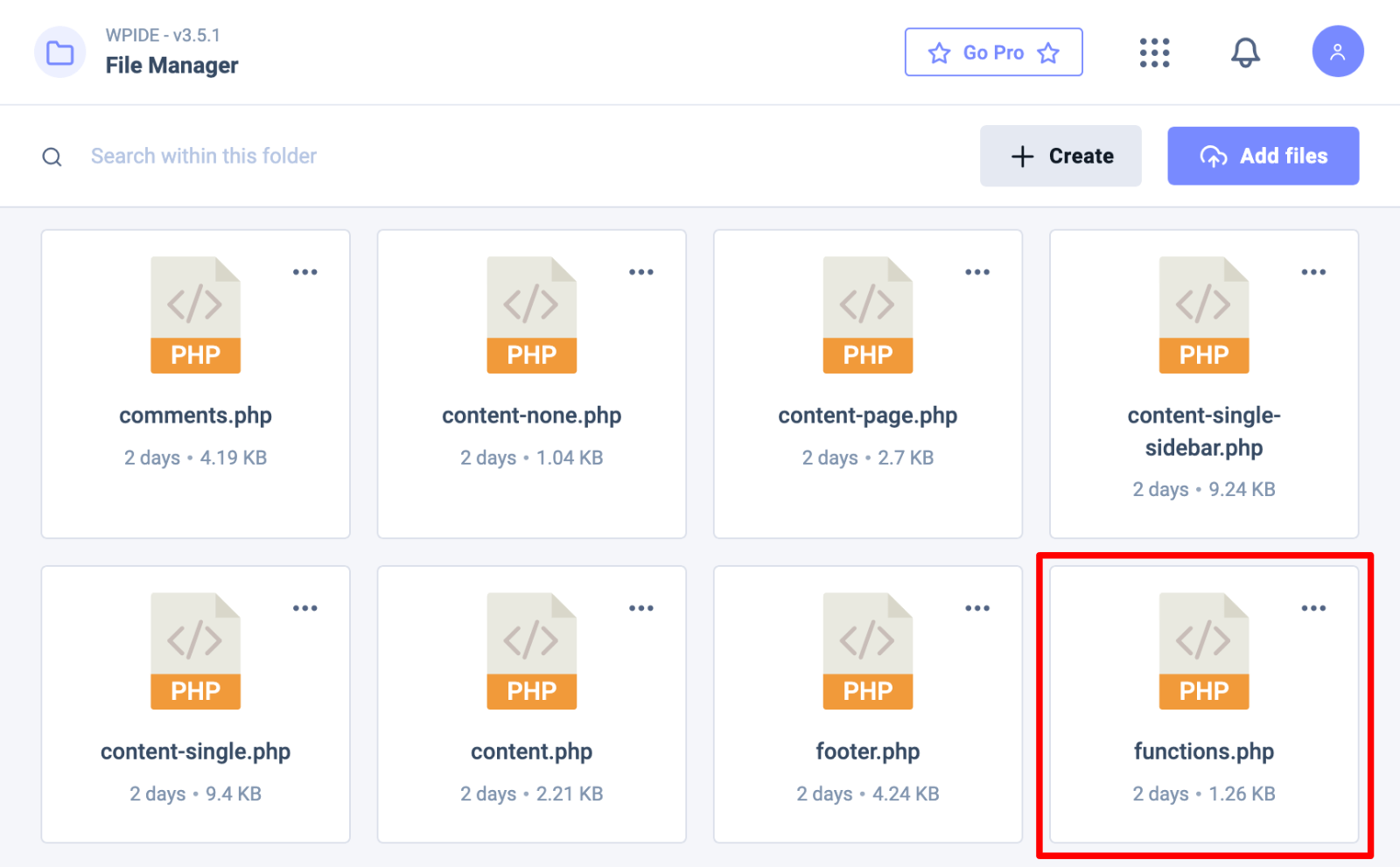
5. Make your adjustments utilizing the improved code editor.
6. Click on “Save” to replace.
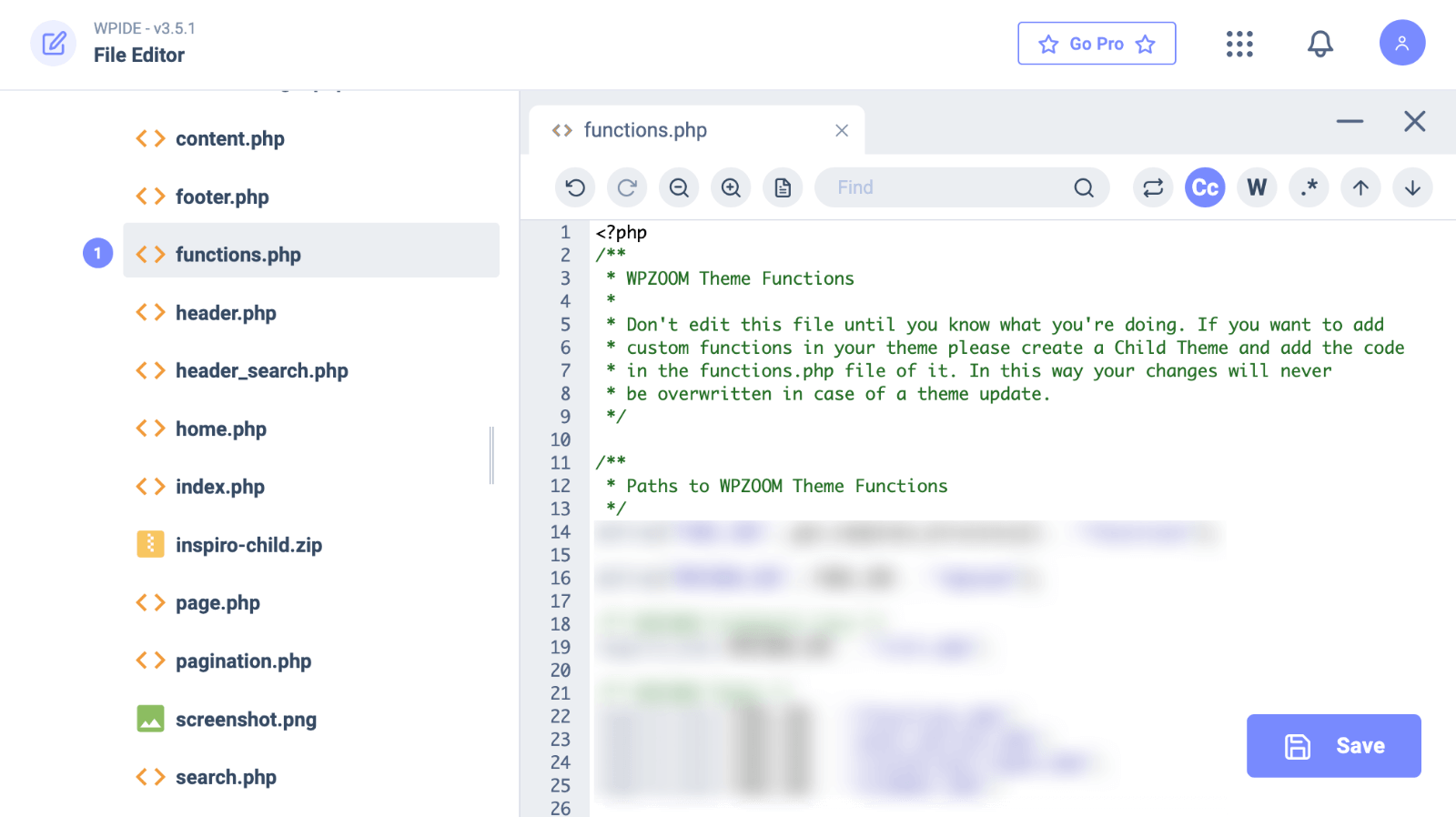
Execs:
✅ Superior code editor with syntax highlighting
✅ Code auto-completion and error checking
✅ File browser with direct entry to all theme information
✅ No want for exterior software program
✅ Higher modifying expertise than the default Theme Editor
Cons:
❌ Requires putting in an extra plugin
❌ Nonetheless received’t assist in case your web site crashes on account of a code error
❌ Could also be disabled on some managed internet hosting environments
FTP/SFTP Technique
For extra management and security, use FTP/SFTP:
- Set up an FTP shopper like FileZilla or Cyberduck.
- Connect with your server utilizing your internet hosting credentials.
- Navigate to wp-content/themes/your-theme-name/.
- Proper-click the capabilities.php file and select “View/Edit” to begin modifying the file, or obtain it to your pc.
- Edit with a correct code editor.
- Save adjustments or add the modified file again to your server.
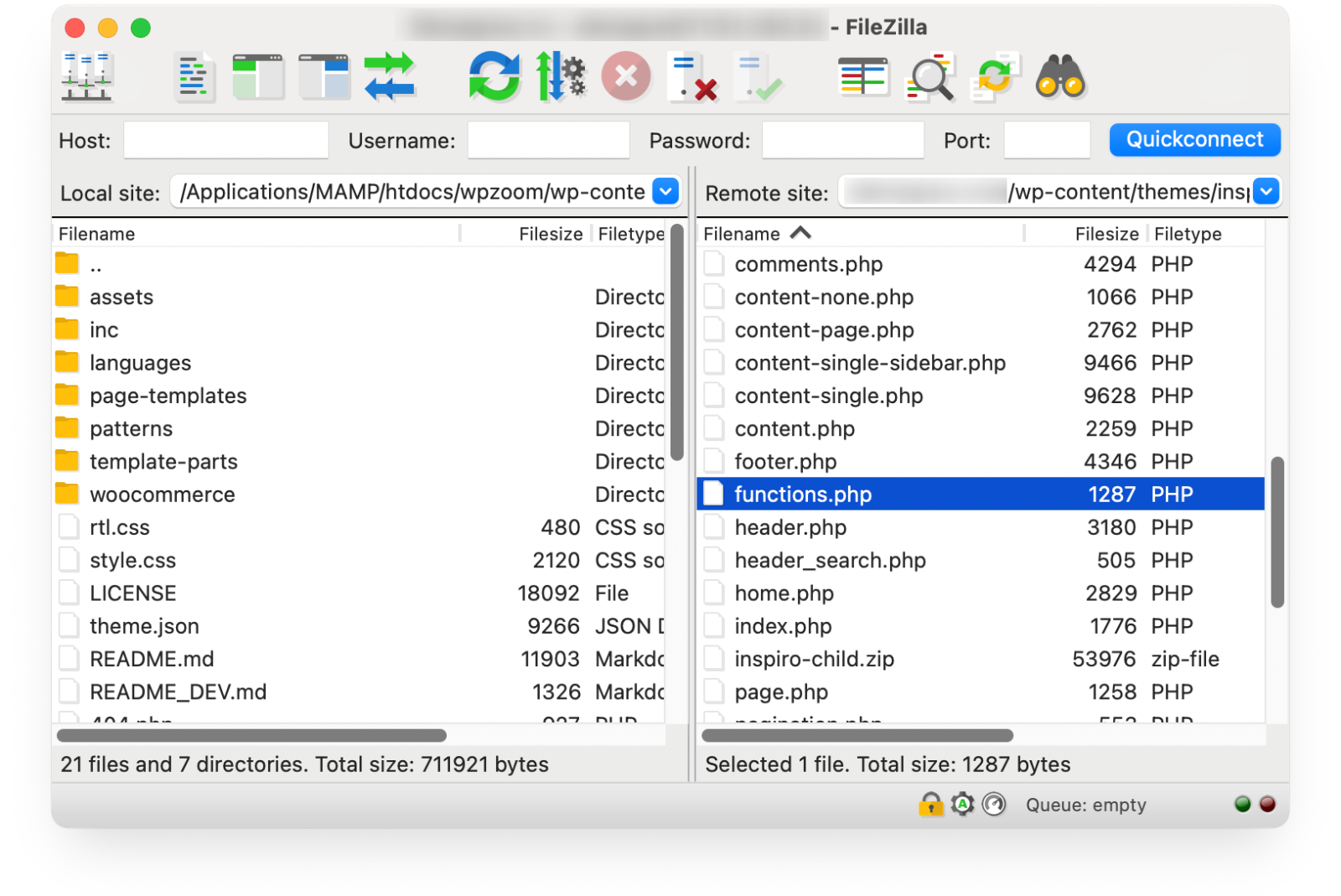
Execs:
✅ Works even when the WordPress dashboard is inaccessible
✅ Higher error checking with skilled editors
✅ Capacity to maintain native backups
✅ Adjustments will be reverted simply
Cons:
❌ Requires further software program
❌ Wants FTP/SFTP credentials
❌ Extra technical course of
cPanel File Supervisor Technique
Many internet hosting suppliers supply cPanel with a built-in File Supervisor:
1. Log in to your internet hosting account’s cPanel.
2. Open File Supervisor.
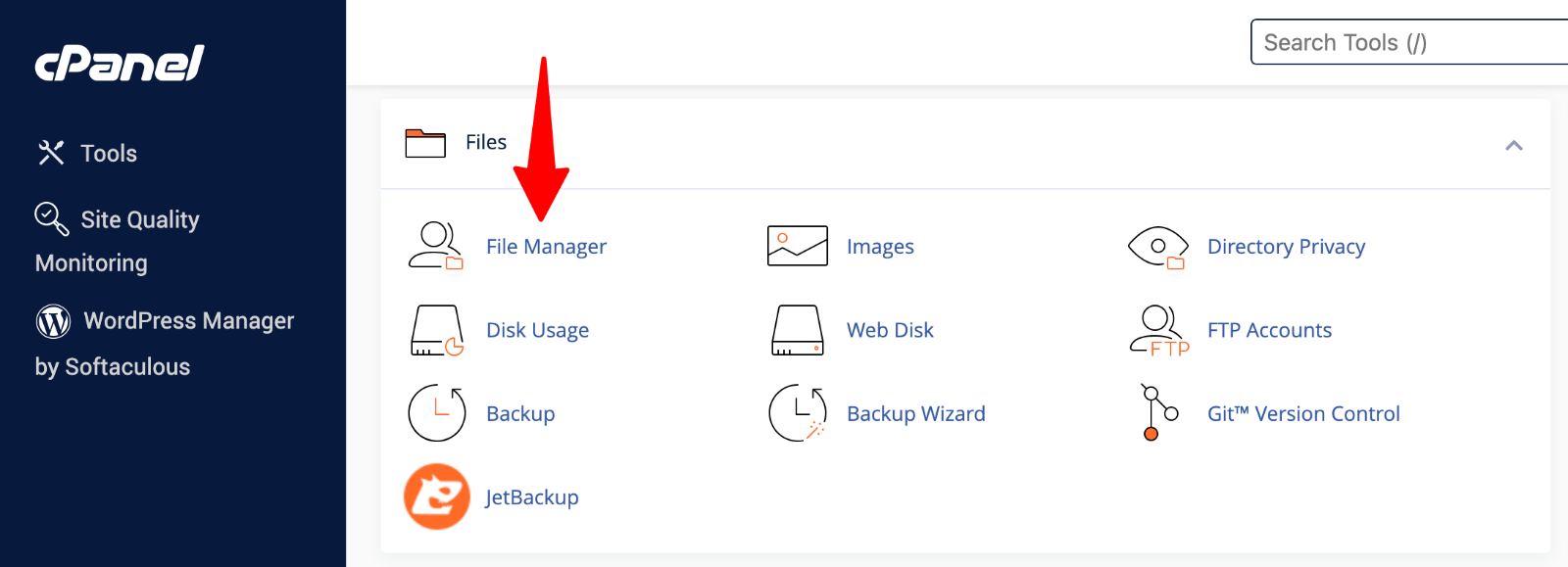
3. Navigate to your WordPress set up listing.
4. Discover wp-content/themes/your-theme-name/.
5. Proper-click capabilities.php and choose “Edit“.
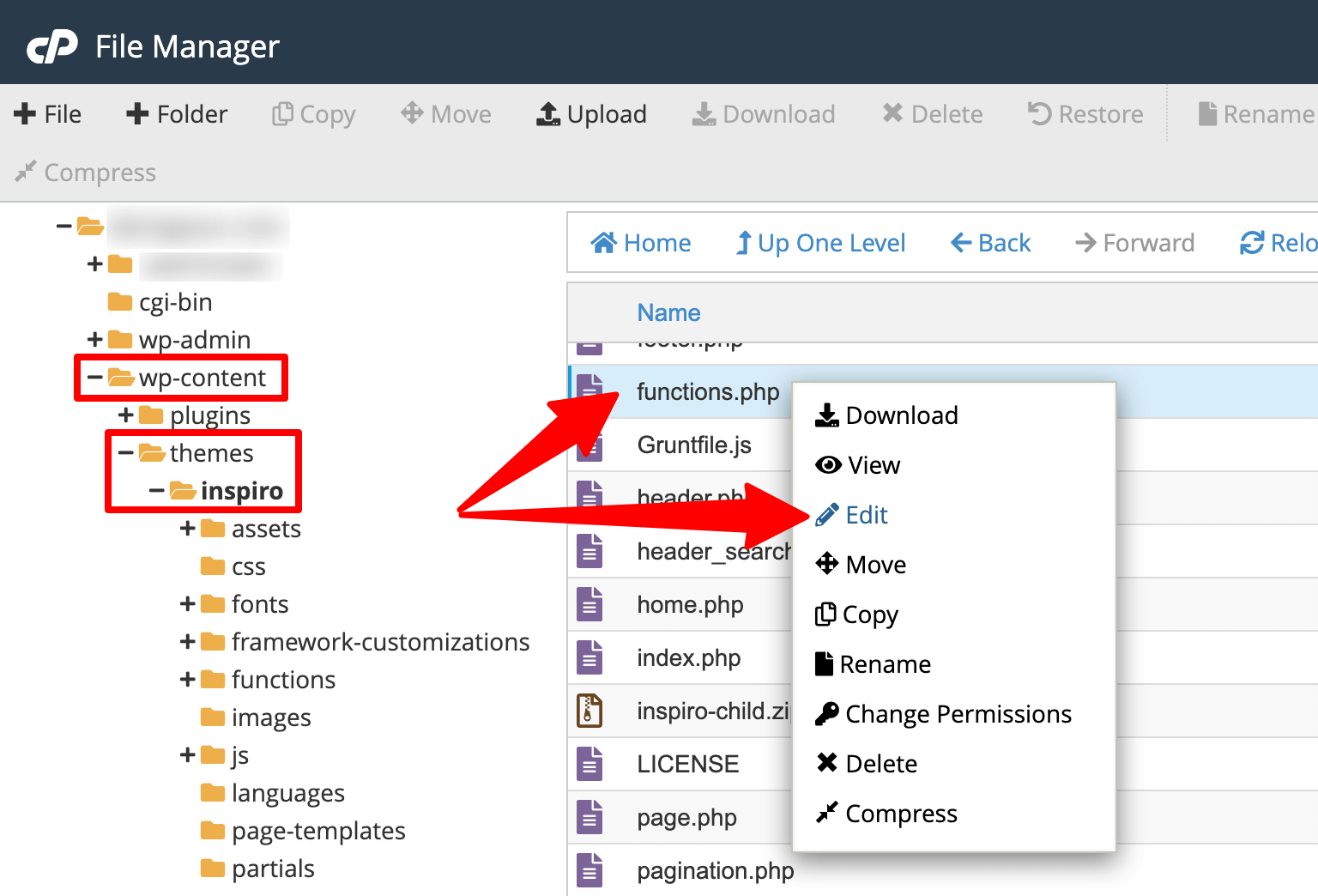
6. Make your adjustments and save.
Execs:
✅ No further software program wanted
✅ Out there even when WordPress is down
✅ Consists of primary modifying options
Cons:
❌ Primary editor with restricted options
❌ Potential for syntax errors
❌ No model management
Features.php in Block Themes vs. Basic Themes
Block themes (also referred to as Full Website Enhancing or FSE themes) symbolize the way forward for WordPress, shifting many customizations from PHP to JSON configuration. This transformation impacts how we use capabilities.php.
Position Variations
In Basic Themes:
- capabilities.php is central to virtually all theme performance
- Required for registering menus, sidebars, and theme options
- Handles loading scripts, kinds, and template elements
- Manages {custom} put up varieties and taxonomies
In Block Themes:
- theme.json handles many visible customizations beforehand requiring PHP
- International kinds and settings are outlined by way of JSON configuration
- Template elements are managed by means of the block editor interface
- Features.php focuses on backend performance and hooks
What Can Be Moved to theme.json in Block Themes
Many customizations beforehand requiring capabilities.php code can now be dealt with by way of theme.json in block themes:
- Typography settings (fonts, sizes, weights)
- Coloration palettes and gradients
- Spacing configurations
- Customized CSS properties
- Structure choices
- Block variations and kinds
What Nonetheless Requires capabilities.php
Even in block themes, sure performance nonetheless requires PHP in capabilities.php:
- Registering {custom} put up varieties and taxonomies
- Including {custom} REST API endpoints
- Creating advanced {custom} blocks with PHP rendering
- Including hooks and filters for backend performance
- Customized database queries and exterior API integrations
- Customized shortcodes and complicated filtering logic
The transition to block themes doesn’t remove the necessity for capabilities.php. It simply adjustments its focus towards backend performance.
When to Edit capabilities.php vs. Different Options
Whereas capabilities.php provides highly effective customization choices, it’s not all the time one of the best resolution. Contemplate these pointers when deciding whether or not to change this file.
When to Use capabilities.php
The capabilities.php file works greatest for:
- Theme-specific performance that ought to solely work together with your present theme
- Minor customizations that don’t warrant a full plugin
- Customized hooks and filters particular to your theme
- Performance you’re creating that’s tightly built-in together with your theme design
When to Use Plugins As an alternative
Plugins supply higher options when:
- The performance ought to persist throughout theme adjustments
- The code supplies options unrelated to your theme’s look
- You want choices that non-technical customers can modify
- The characteristic is advanced sufficient to warrant its personal settings web page
Code Snippets Plugin Various
The Code Snippets plugin supplies a user-friendly interface for including PHP code with out immediately modifying information. Advantages embody:
- Code group with descriptions and tags
- Capacity to allow/disable snippets with out deleting code
- Security options that stop damaged snippets from operating
- Persistence throughout theme adjustments
This strategy combines the ability of {custom} code with the comfort and security of the WordPress admin interface.
Customized Plugin Growth
For advanced performance, creating a custom plugin provides a number of benefits:
- Clear separation between design and performance
- Portability throughout themes
- Higher group for in depth customizations
- Potential for distribution to different WordPress customers
Even primary plugins are comparatively easy to create and supply a extra structured strategy to extending WordPress.
Finest Practices for Organizing Your capabilities.php File
As your capabilities.php file grows, group turns into essential for upkeep. Observe these practices to maintain your code manageable.
Add descriptive feedback to elucidate what every perform does:
/**
* Provides {custom} picture sizes for theme
*
* Creates further picture sizes for featured posts
* and sidebar thumbnails
*/
perform my_custom_image_sizes() {
// Operate code right here
}Good feedback make your code comprehensible months later when it’s worthwhile to replace it.
Set up with Embody Information
For advanced themes, separate performance into a number of information:
// Embody theme customizer choices
require_once get_template_directory() . '/inc/customizer.php';
// Embody {custom} widgets
require_once get_template_directory() . '/inc/widgets.php';
// Embody shortcodes
require_once get_template_directory() . '/inc/shortcodes.php';This strategy improves group and makes code simpler to keep up. Many trendy block themes additionally use this construction to separate several types of performance.
Observe Naming Conventions
Use constant, descriptive naming conventions:
- Prefix capabilities together with your theme title or acronym
- Use lowercase letters and underscores
- Title capabilities primarily based on their objective
Instance: mytheme_register_sidebars() clearly signifies each origin and objective.
Keep away from Conflicts
Stop conflicts with plugins and WordPress core:
- At all times test if a perform exists earlier than defining it
- Use distinctive perform names together with your theme’s prefix
- Wrap code in conditionals when acceptable
if (!function_exists('mytheme_custom_header')) {
perform mytheme_custom_header() {
// Operate code
}
}Contemplate Efficiency
Optimize your code for higher efficiency:
- Hook into acceptable actions relatively than operating code on each web page
- Use conditional tags to restrict execution to particular pages
- Cache outcomes for resource-intensive operations
- Decrease database queries
Effectively-optimized code improves web site velocity and person expertise.
Separate Basic and Block Theme Performance
In case you’re constructing a theme that helps each traditional and block editor experiences, arrange your code accordingly:
// Features for each traditional and block editor assist
require_once get_template_directory() . '/inc/frequent.php';
// Block editor particular performance
if ( function_exists( 'register_block_pattern' ) ) {
require_once get_template_directory() . '/inc/block-patterns.php';
}
// Basic editor fallbacks
if ( ! function_exists( 'register_block_pattern' ) ) {
require_once get_template_directory() . '/inc/classic-editor.php';
}This strategy ensures your theme works properly no matter which editor the person prefers.
Safety Issues for capabilities.php
The capabilities.php file generally is a safety vulnerability if not adequately protected. Pay attention to these safety dangers:
- Direct file entry from browsers
- Code injection assaults
- Cross-site scripting (XSS)
- Unauthorized file modifications
Correctly securing capabilities.php protects towards these threats. Take these measures:
- Use a security plugin
- Preserve WordPress and themes up to date
- Use sturdy passwords for FTP/SFTP
- Restrict file permissions (644 for information, 755 for directories)
- Contemplate transferring capabilities.php to a non-standard location
- Monitor file adjustments recurrently
- Defend with .htaccess. Add this code to your .htaccess file in your theme listing to dam direct entry:
# Defend capabilities.php from direct entry
<Information capabilities.php>
Order Enable,Deny
Deny from all
</Information>Safety requires vigilance and a number of layers of safety.
Helpful Code Snippets for capabilities.php
Listed below are sensible code snippets you may add to your capabilities.php file to reinforce your WordPress web site. Until in any other case famous, these will work in each traditional and block themes.
Show Final Modified Date on Posts
This snippet exhibits when a put up was final up to date, serving to readers establish recent content material:
perform display_last_modified_date($content material) {
if (is_single() && !is_page()) {
$modified_date = get_the_modified_date('F j, Y');
$modified_time = get_the_modified_time('g:i a');
$modified_info = '<p class="last-updated">Final up to date on ' . $modified_date . ' at ' . $modified_time . '</p>';
$content material = $modified_info . $content material;
}
return $content material;
}
add_filter('the_content', 'display_last_modified_date');Customise WordPress Toolbar
Take away the WordPress toolbar for sure person roles:
perform hide_admin_bar_for_specific_roles() {
if (current_user_can('editor') || current_user_can('writer')) {
show_admin_bar(false);
}
}
add_action('after_setup_theme', 'hide_admin_bar_for_specific_roles');Delay posts from showing in your RSS feed to present engines like google time to index your content material first:
perform delay_posts_in_rss_feed($the place) {
world $wpdb;
if (is_feed()) {
$now = gmdate('Y-m-d H:i:s');
$wait="12"; // Hours to attend
$the place .= " AND TIMESTAMPDIFF(HOUR, $wpdb->posts.post_date_gmt, '$now') > $wait ";
}
return $the place;
}
add_filter('posts_where', 'delay_posts_in_rss_feed');Preserve sure content material classes out of your RSS feed:
perform exclude_category_from_rss($question) {
if ($query->is_feed) {
$query->set('cat', '-5'); // Substitute 5 together with your class ID
}
return $question;
}
add_filter('pre_get_posts', 'exclude_category_from_rss');Change Excerpt Size
Customise what number of phrases seem in your put up excerpts:
perform custom_excerpt_length($size) {
return 30; // Change variety of phrases
}
add_filter('excerpt_length', 'custom_excerpt_length');Add Help for SVG Information
Allow SVG file uploads to WordPress:
perform allow_svg_upload($mime_types) {
$mime_types['svg'] = 'picture/svg+xml';
return $mime_types;
}
add_filter('upload_mimes', 'allow_svg_upload');Create Customized Shortcodes
Make a shortcode that shows the present 12 months (helpful for copyright notices):
perform year_shortcode() {
return date('Y');
}
add_shortcode('current_year', 'year_shortcode');Utilization: Copyright © [current_year] Your Firm
Disguise Login Error Messages
Enhance safety by masking particular login error messages:
perform custom_login_error_message() {
return 'Login credentials incorrect.';
}
add_filter('login_errors', 'custom_login_error_message');Customise Search Outcomes Depend
Change what number of search outcomes seem per web page:
perform modify_search_results_count($question) {
if ($query->is_search && !is_admin()) {
$query->set('posts_per_page', 15); // Change quantity as wanted
}
return $question;
}
add_action('pre_get_posts', 'modify_search_results_count');Add featured pictures to your RSS feed content material:
perform add_featured_image_to_rss($content material) {
world $put up;
if (has_post_thumbnail($post->ID)) {
$content material = get_the_post_thumbnail($post->ID, 'medium') . $content material;
}
return $content material;
}
add_filter('the_excerpt_rss', 'add_featured_image_to_rss');
add_filter('the_content_feed', 'add_featured_image_to_rss');Take away WordPress Model Quantity
Disguise your WordPress model for safety:
perform remove_wordpress_version() {
return '';
}
add_filter('the_generator', 'remove_wordpress_version');Register Block Sample Class (Block Themes)
Create a {custom} block sample class to your block theme:
perform register_custom_pattern_category() {
register_block_pattern_category(
'my-custom-patterns',
array( 'label' => __( 'My Customized Patterns', 'my-theme' ) )
);
}
add_action( 'init', 'register_custom_pattern_category' );Add Theme Help for Block Options
Add assist for particular block editor options:
perform add_block_theme_supports() {
// Add assist for block kinds
add_theme_support( 'wp-block-styles' );
// Add assist for editor kinds
add_theme_support( 'editor-styles' );
// Add assist for responsive embeds
add_theme_support( 'responsive-embeds' );
}
add_action( 'after_setup_theme', 'add_block_theme_supports' );Improve Your WordPress Website with WPZOOM
Whereas understanding capabilities.php provides you highly effective customization skills, WPZOOM provides professionally designed themes that reach WordPress performance with out requiring {custom} code.
Our themes include built-in customization choices which are accessible by means of a user-friendly interface, eliminating the necessity for direct PHP modifying. From meals blogs to portfolio websites, WPZOOM supplies options that mix beautiful design with highly effective options.
Whenever you select WPZOOM, you get greater than stunning designs. You get merchandise constructed with efficiency, safety, and value in thoughts. Take your WordPress web site to the following stage in the present day!
Brought to you by FREELANCE
WEB DESIGNER KUALA LUMPUR







